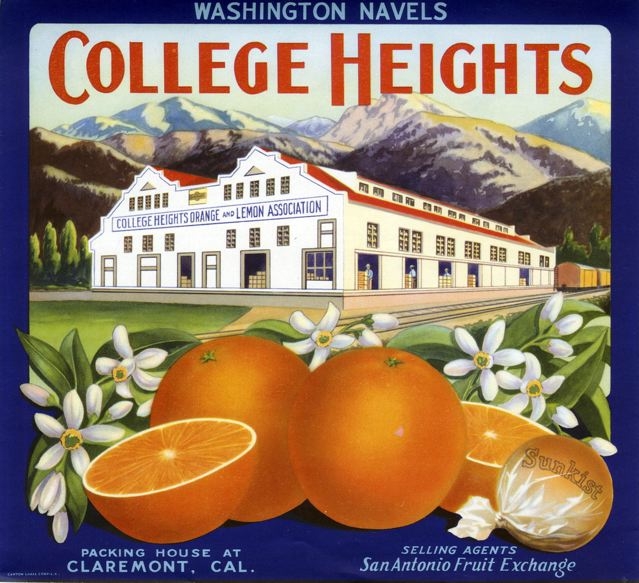
An interesting book called “Orange Empire: California and the Fruits of Eden” by Douglas Cazaux Sackman tells the story of how oranges went from being an occasional treat to a mainstream part of the American diet. In fact, Los Angeles was once the center of the “Orange Empire” which developed into a massive industry in California.
Oranges were brought by the Spanish as they settled the missions, and the first sizable grove in Alta California was planted at the San Gabriel Mission, near Los Angeles, around 1804. Oranges were grown on a very limited scale until a frontiersman and entrepreneur named William Wolfskill decided to try growing oranges commercially, using seedlings from the Mission. His initial two-acre orchard was planted in 1841 in what is now downtown Los Angeles. During the Gold Rush, he was able to ship his citrus crop north to miners who were willing to pay a premium to protect themselves from scurvy.
The citrus industry in Southern California grew slowly at first, then really took off in the 1870s due to two innovations. First, a family in Riverside obtained two trees of an orange variety from Brazil. The fruit from these trees was larger, sweeter and easier to peel. This variety, which came to be known as the Washington Navel, created a surge of interest in growing oranges. In the same decade, the transcontinental railroad system connected to Los Angeles, and the very first railcar load of oranges, from the Wolfskill orchard, was shipped east in 1877. In the late 1880s, with the advent of refrigerated rail shipping, the growing citrus industry got another boost. Many new growers entered the citrus farming business, and numerous towns along the foothills of the Los Angeles basin were formed as the industry grew up in those areas.
“Centered on the Los Angeles basin, a vast citrus landscape was coming into being,” said Sackman (p.42). “In 1870, only 30,000 orange trees were growing in the state. Twenty years later, 1.1 million trees were producing fruit." By 1893, local citrus growers had organized themselves into the Southern California Fruit Growers Exchange, which later became known as Sunkist. Sunkist was instrumental in driving the demand for oranges, promoting oranges and orange juice as health aids, with national advertising campaigns beginning in 1907. Sunkist advertisements, along with colorful orange crate labels, helped to brand Los Angeles and Southern California as a new Eden, the land of sunshine and good health. This image helped to drive migration from to Southern California for many years.
Commercial citrus production in Los Angeles County began to decline after World War II, as orchards were rapidly sacrificed to the growing, sprawling suburbs of the Los Angeles basin. As recently as 1970, there were still more than 50,000 acres of citrus in the county; but today, most orange trees in Los Angeles are in backyards rather than in groves.
The citrus industry, still critical to California’s agricultural economy, has long since moved to other counties and other parts of the state. While there is no longer an “Orange Empire” here in Los Angeles, oranges are still a treat, especially if grown in our own backyards. As I prepare for the holidays, I know that today, an orange in a stocking might not be as special as it once was. But to pluck an orange off a tree, on a 75 degree day in December, still makes Los Angeles seem like Eden to a former Midwesterner like me.